Our cookies
We use essential cookies to make our website work smoothly for you. To make sure we're always improving, we'd like to use analytics to track how people use the site. We won't set non-essential cookies unless you give us permission. You can find more information about all the cookies we use in our Privacy and Cookie Policy.
Some cookies are a must for our website to function properly. If you turn off essential cookies, it may affect how you experience our site.
The non-essential cookies we use help us understand how you use our website and make improvements to enhance your experience.
Listen up Coaches! The Importance of Giving Children a Voice
Professor Laura Lundy presents a detailed analysis of her internationally-acclaimed model of child participation – The Lundy Model. Using plain language and broken down into digestible sections for sports coaches, she explains why governments, sports councils, and national governing bodies value the framework as a tool for understanding and bringing to life the right of children to have a voice and be heard.
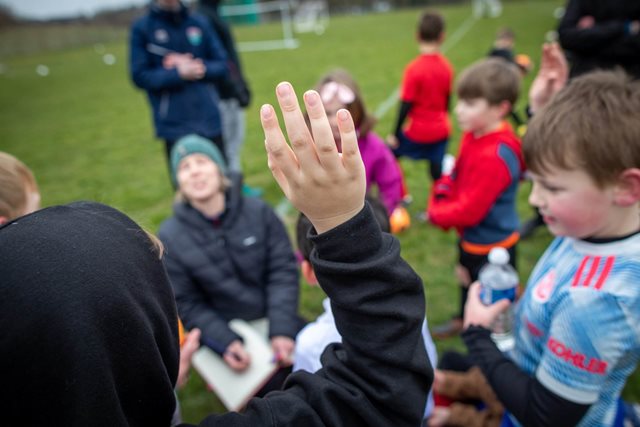
Included in this article:
- ‘Study on child participation made me a believer’
- ‘Children’s feedback spoke volumes’
- Overcoming the fear factor of implementing a child-rights approach
- Children’s rights complex but not complicated
- Model of excellence: How to apply the Lundy Model in your coaching
- Final thoughts and 'three simple questions' to ask children
by Blake Richardson
Anyone who utters the archaic phrase ‘children should be seen and not heard’ within earshot of a devoted child-first coach, steeped in the practice of putting children at the centre of the decision-making process, is likely to send them into a spin.
That is unlikely to happen as, thankfully, such draconian attitudes towards children have evolved since the Victorian era.
However, you do still hear the expression ‘adults know best’, which is enough to initiate a spike in Professor Laura Lundy’s blood pressure.
A Professor of Children’s Rights at Queen’s University, Belfast, Professor Lundy is a passionate exponent of children’s rights, with a particular interest in the right of children to be listened to, express their views freely, and participate in decision-making.
The idea that adults know what is best for children – the prevailing train of thought amongst parents, and many coaches –contradicts the philosophy she has come to hold so dear.
“One thing I want to emphasise to coaches is that, yes, you know a lot, and you do have knowledge and experience that children do not have.
The whole idea of a rights-based approach is not to hand it over to children, it is recognising that children have knowledge and experiences that coaches do not have, and that when you are making decisions that affect children, you therefore need to ask them what they think.”
Not being allowed to make decisions is the ultimate denial of human rights.
And the reality is that for children, compared to most adults, they are in a social reality that many decisions are made for them, not by them.
At the heart of all human rights are three concepts, says Professor Lundy: dignity, equality, and respect for your human worth.
“The way in which we mostly enjoy the respect for our human worth, including our dignity and equality, is that we are autonomous: we get to make decisions.”
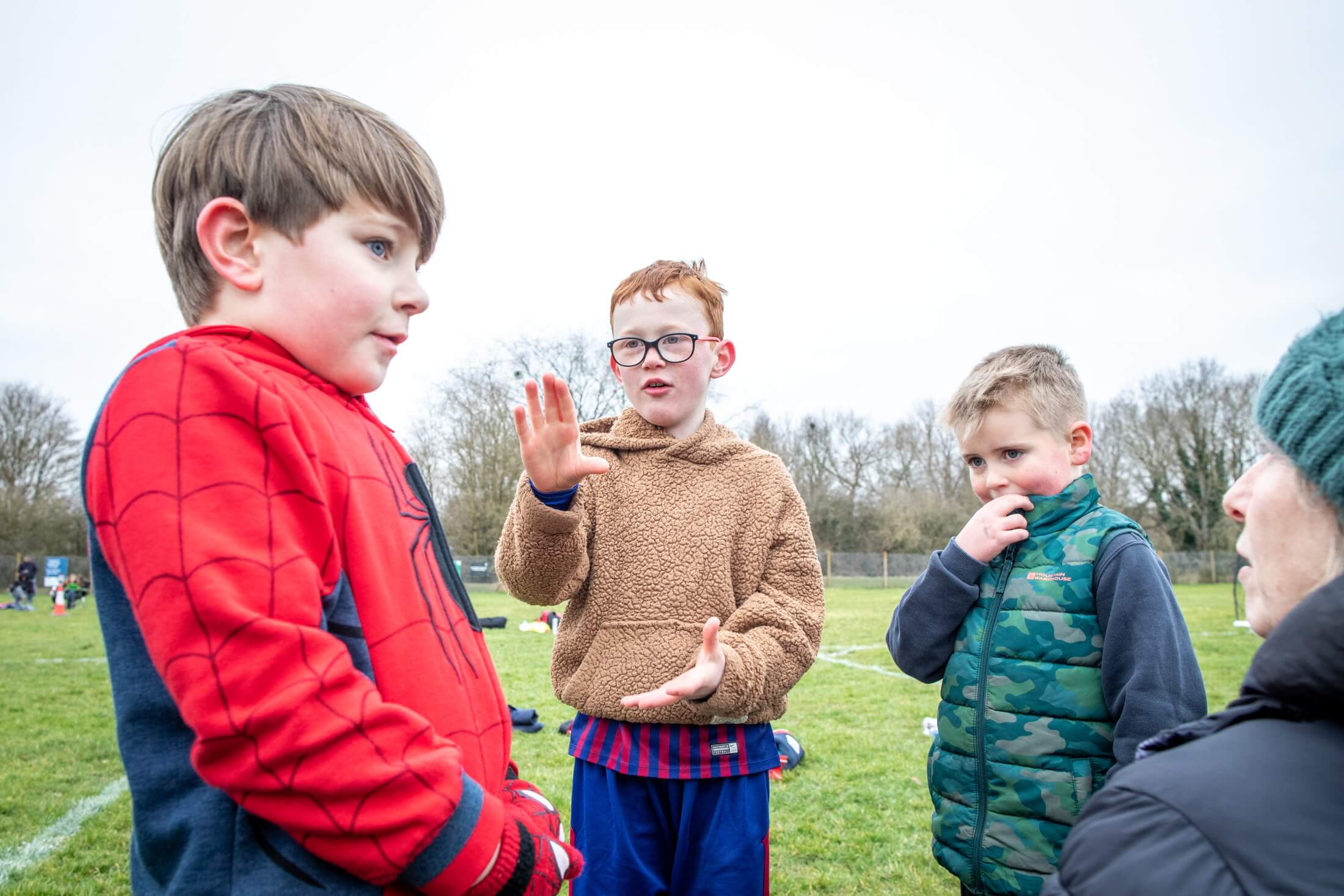
'Study on child participation made me a believer'
Before we put the Lundy Model under the microscope and closely examine the four interlinked concepts that contribute to making child participation meaningful and effective – space, voice, audience, influence – and explain how each strand can be interpreted and delivered practically, Professor Lundy begins by providing the background to her interest in child participation rights.
In 2013-2014 she led a research project conducted on behalf of the Northern Ireland Commissioner for Children and Young People.
The study covered every aspect of children’s lives, including sport and play.
She spoke to families, police, social workers, clubs, and other sports organisations who collaborated with children as part of their role.
All said the voice of the child was important to them.
Professor Lundy admits that, at the time, she had not been entirely convinced by the notion that children can know what’s best for them.
Journey into the heart of children's rights with Laura-Jane Jones and Professor Laura Lundy on the Play Their Way Podcast
I thought, that’s all very well, but adults DO know best.”
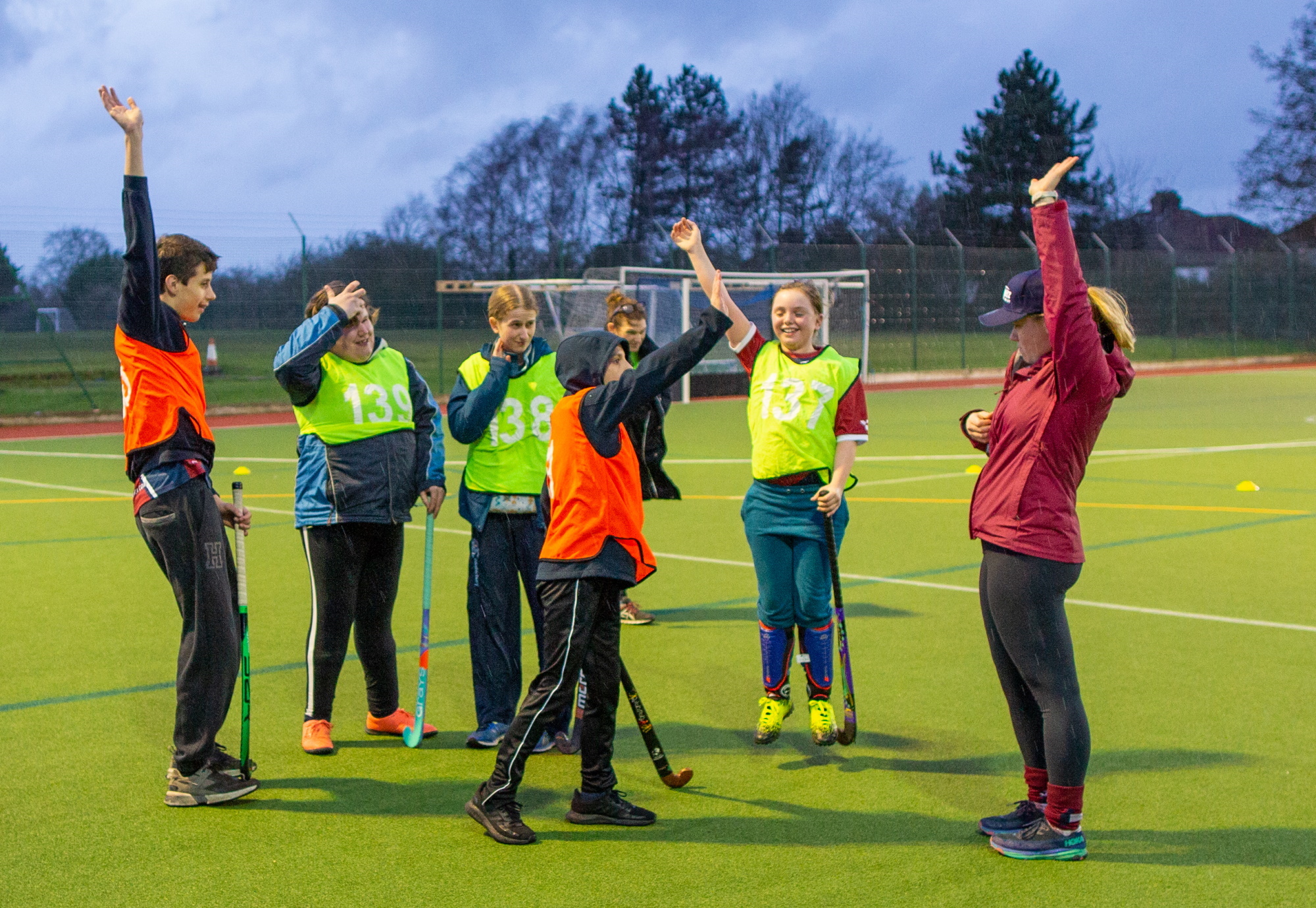
'Children’s feedback spoke volumes'
The disconnect between the perception of adults and children became abundantly clear from an early stage of her investigative study.
“The children were telling me that in every dimension of their lives, they just did not feel listened to; that they weren’t asked their views and when they were they weren’t taken seriously.
“They also said that if they offered their views without being asked, that was worse. Telling adults what they thought was considered cheeky and challenging authority.
Looking at all the data was a turning point for me. It changed everything. I understood for the first time how important it was for children and how significant a rights-based approach to delivery was.
“And that’s when it also clicked that people like me didn’t understand fully how to do it.”
The Lundy Model was born from this realisation that children should be actors in their own lives.
In the proceeding years, her interest has snowballed, to the extent that she has become one of the leading thinkers in the field of children’s participation rights.
For Professor Lundy, the right of children to have a voice and be involved in the decision-making process is ‘king’ of the 54 Articles set out in the UNCRC.
You can’t realise the right to education, the right to be protected from all forms of harm, the right to play etc, without having the right to have a voice and have your views taken seriously. It is necessary for the delivery of all other rights.”
Overcoming the fear factor
Professor Lundy’s research provided unassailable evidence that the right of children to have a voice is underplayed and often ignored.
But in embarking on a long-term mission of changing attitudes to change behaviours other challenges remained – and still remain.
Sports coaches have a legal responsibility to ensure children and young people’s voices are heard and their opinions acted on, as defined in Article 12 of the UN Convention on the Rights of the Child (UNCRC), on which the Lundy Model is based.
“You can’t put children first if you don’t involve them,” says Professor Lundy, “and the UNCRC provides us with this legal imperative to involve them in ways that make child participation meaningful and effective.”
Because it is a legal requirement that can seem quite frightening to coaches, particularly grass-roots coaches who volunteer their time to help others.
Professor Lundy’s response is “doing something is better than doing nothing”.
“You have to start somewhere, then get better. The most important thing is you dip your toes in, you try and, crucially, you learn. You ask children what worked and what didn’t, and you try to get better.”
The Lundy Model
Download a PDF of the Lundy Model to print out and refer back to during session planning.
DOWNLOAD
Professor Lundy says it is the people who are most cynical or reluctant initially, and who give it a go, who often end up being the most passionate advocates, because they see that change initially and incrementally.
“Just because you can’t do it as well as you would like to, does not mean you shouldn’t do it at all,” she says. “Participation is always imperfect.
Not everybody will be at the same starting line. What’s important is making sure everybody starts.”
Children’s rights complex but not complicated
Another reason coaches may be apprehensive about wading into the conversation on children’s rights is that the topic is seen as didactic and pedagogical. In Layman’s terms, a bit preachy and challenging.
“If you come at child participation in that way then there is a chill factor,” acknowledges Professor Lundy.
It is true that a lot of children’s rights reading material exists in the form of scholastic research papers and in scientific journals.
The Children’s Coaching Collaborative exists to interpret and translate academic theory into simple to understand language that clubs and coaches can draw on for policy and practice.
It is also true that you do not need to have an expansive knowledge of the subject to apply the child-rights Lundy Model into your coaching practice. Complexity does not denote difficulty.
As Professor Lundy explains: “People associate child participation with needing this huge skillset and comprehensive training. But if you are a children’s coach then you possess the soft skills to communicate effectively with children and it is about working with the strengths you have.”
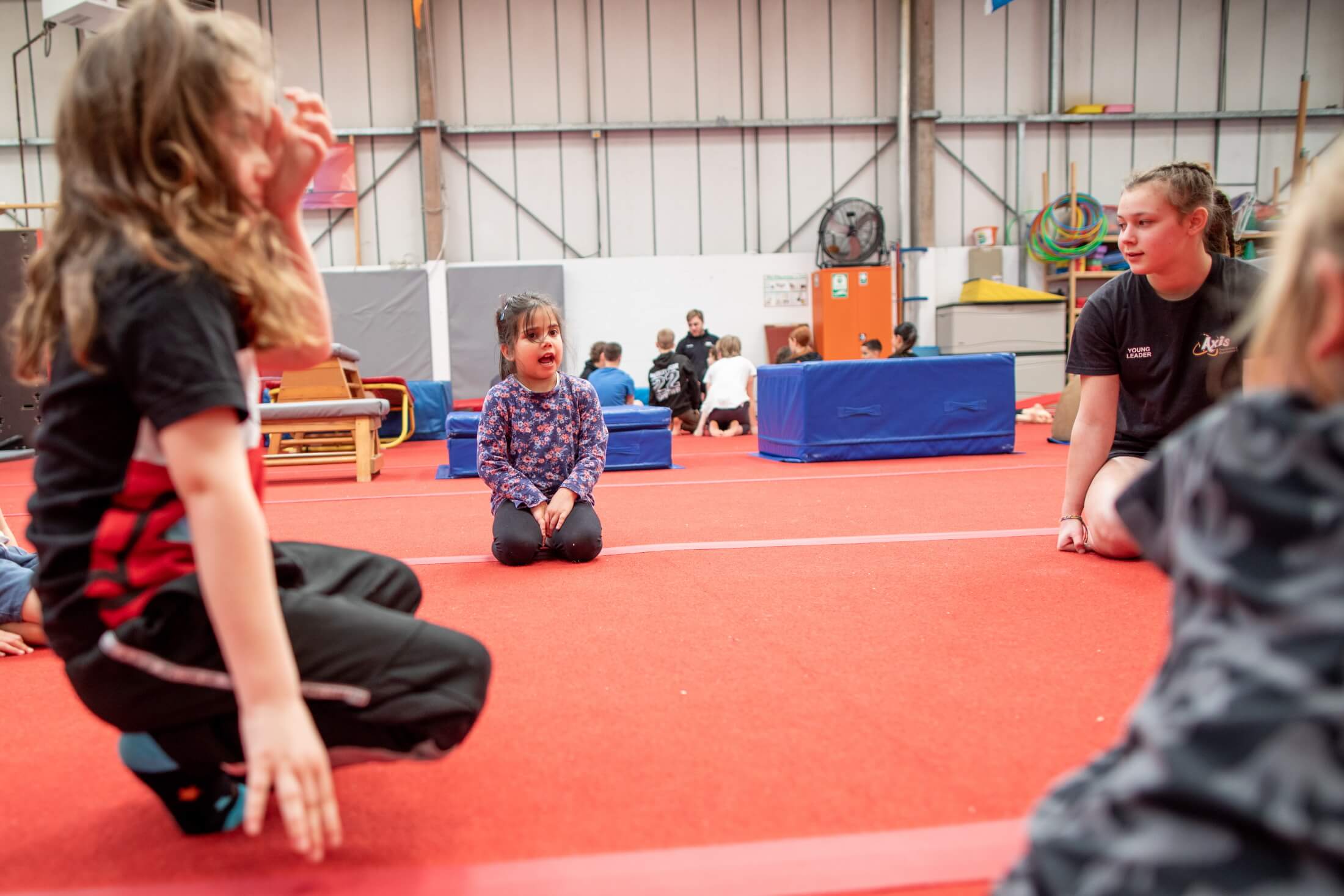
Model of excellence: How to apply the Lundy Model in your coaching
Okay, so now we’ve dipped our toes into why realising children’s rights are so critical and demystified the UN Convention on the Rights of the Child, let’s dive deeper into understanding the Lundy Model and how coaches can use it in practice.
The model has been adopted by, amongst others, the European Commission, the World Health Organisation, UNICEF, Sports Ireland and the Irish Government, and is based on four key concepts: Space, Voice, Audience, and Influence – four chronological steps to realise children’s participation.
SPACE: Children must be given the opportunity to express a view.
VOICE: Children must be facilitated to express their views.
AUDIENCE: The view must be listened to.
INFLUENCE: The view must be acted upon, as appropriate.
Tips and need-to-know information for creating safe and inclusive spaces for participation.
- It is the responsibility of the coach to create the conditions where children are given the opportunity to express their opinion, air their concerns or debate different ideas.
- Children must feel safe to express their views. For example, not every child will be confident to communicate in front of a group and may prefer to talk one-to-one with the coach in a more confidential space.
- The adult has an obligation to listen and hear what children have to say in the space that has been created.
- There should be no fear of reprisal or rebuke from the coach, or fear of being shamed or humiliated by their peers.
- It should be an inclusive space, where everyone is listened to. For example, extroverts have a tendency to take charge of group situations, but the view of quieter children should be given equal weight to those children with dominant personalities.
- The same principle of equality of individual opinions applies to the protected characteristics of age (younger children and older children); perceived ability (non-disabled children and children with a learning disability or physical impairment); ethnicity; religion; and gender.
Tips and need-to-know information for how to facilitate children’s voice and act upon their views.
- Every child has the right to express their views, feelings and wishes in all matters affecting them – and thereby given a genuine opportunity to influence outcomes – as prescribed by Article 12 of the UNCRC.
- Encourage children to express themselves through the medium of choice. This is where sports coaches have the potential to be creative. For example, children vote to decide which game they want to play at the end of a session by choosing to: ‘run to this side of the hall if you want to play game A; run to the other side if you want to play game B’. The key is to make the democratic decision-making process playful.
- Read about more ways to encourage children’s autonomy and creativity of expression in our articles: Ruck and Roll: A Guide to Coaching Rugby to Children and How to Coach Swimming so Children and Young People Have a Splashing Time.
- Children should be supported to raise things that matter to them. But this has to be voluntary. Children shouldn’t be forced into having a view.
- Don’t tell children what you think before asking them for their opinion, and don’t assume you know what they think. For example, don’t assume swimmers want to give their feedback poolside at the end of a session. Ask them. They might say they want to have a hot shower first and get warm.
- Offer children different ways to give their views.
- Make sure information provided by the coach and the club is child-friendly. For example, club websites are generally front-facing to parents. Create child-friendly versions of websites and written documents.
- Work with children (not for children) to establish their own set of values or club rules. By giving them ownership – from asking them what they believe the desired behaviours and guiding principles should be – it becomes a consenting journey between children and coach.
- Eventually this behaviour builds a culture where the children expect to be asked and the coach expects to learn.
Tips and need-to-know information for creating an audience ready and willing to listen.
- Children express themselves all the time through their behaviours. They are communicating even when they are not speaking. So be attentive to behaviours. For example, they may be consistently not turning up to practice; being silly or being silent. Be perceptive to your group.
- Once you have ‘listened’ it is about acting effectively. It’s important when children tell you something that their views are heard by the right decision maker – and that might not always be the coach.
- For example, some issues children raise might involve the wider club or be the remit of the governing body. The coach can’t change anything themselves on the day but by going through the correct formal channels of communication they can ensure the message gets conveyed to the relevant person who has the power to make a difference by effecting change.
Tips and need-to-know information for how coaches can act upon the views and decisions of children.
- Coaches should ensure that all developments are fed back to children, so they become aware of how much influence they can have on decisions.
- Give them feedback and be transparent by explaining the outcome of discussions and final decisions taken.
- Enthusiastic children may have unrealistic expectations that their requests will be met. Coaches have a responsibility to explain why something they want to see implemented may not be possible. For example, there may be no money in the club kitty to buy extra equipment; a child’s choice of activity needs to be age appropriate, so sparring or full-contact in sports like boxing or rugby may not be permitted according to governing body rules.
- It is important to share with children the impact of their views on any decisions made.
Be aware that the advice given for each concept may differ depending on a number of factors. What method works in one environment, age-group, team, sport etc may not work in another.
Final thoughts and 'three simple questions' to ask children
A simple starting point for embedding a child-rights approach in your coaching practice is to ask children what decisions are important to them.
Professor Lundy suggests sitting with your group and saying something along the lines of:
‘I think you’ve got something you can tell me here about how we can do this better. Here are the kinds of decisions I make every day about our work together’.
It could be when the team plays, how they play, what they play, the order they play.
Then ask three simple questions:
- What would you keep (doing)?
- What would you stop?
- What would you start?
“Give children that open space to make a suggestion and to draw on their knowledge and expertise.
“It will help you identify the dozens of micro-decisions that you make, a lot of which are made unconsciously and not actually thought through. It’s so simple and so effective.
The most important thing to remember is your attitude to the children themselves. That you see them as people that are entitled to influence their own lives.”
The Lundy Model
Download the Children and Young People's Feedback form that is part of the Lundy Model to help you assess whether children feel they are heard.
DOWNLOAD THE PDF TO PRINT
Other resources you may like...
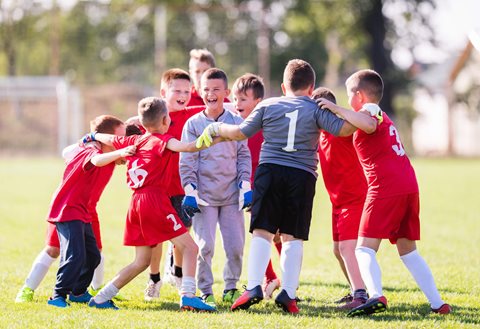
Coaching Children's Rights in a Sports Environment
READ MORE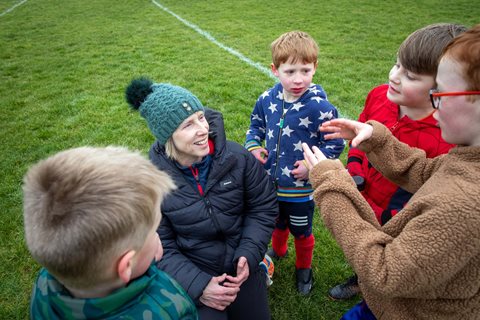
Defending Children's Right to Play: Salisbury Rovers Case Study
READ MORE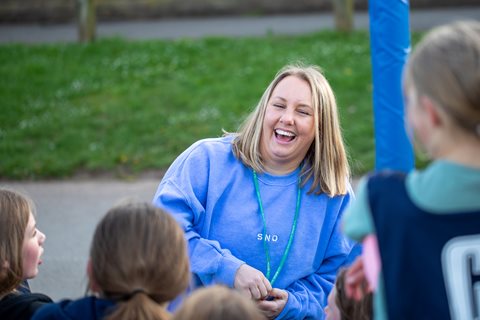
Coaching Compass - Navigate your child-first coaching journey
Chart Your CourseAbout the contributor

Laura Lundy is Professor of Children's Rights at Queen’s University, Belfast and Professor of Law at University College Cork. She is also Co-Director of the Centre for Children’s Rights, editor of the International Journal of Children’s Rights and a qualified law barrister. She has a particular interest in facilitating public understanding of the human rights of children.
SHARE THE MOVEMENT
Help spread the word by sharing this website with fellow coaches!
